~~~~~~~~~~~~~~~ SuperForeverCom ~~~~~~~~~~~~~~~
~~~~~~~~~~~~~~ the Super NES fansite ~~~~~~~~~~~~~~
QUICK NAVIGATION
| HOME | ABOUT | GAMES | PAGES | PLAYLISTS | MIDI FILES | EMULATION | GALLERY |
~~~~~~~~~~~~~~~~~~~~~~~~~~~~~~~~~~~~~~~~~~~~~~~~~~~~~~~~~~~~~~~~~~~~~~~~~~~~~~~~~~~~
ABOUT
| CONSOLE | WEBSITE |
CONSOLE
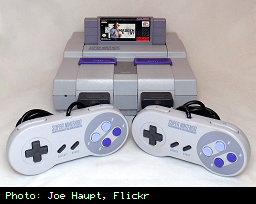
The Super Nintendo Entertainment System was Nintendo's second home videogame console, after the NES.
In Japan, the system was known as "Super Famicom", being the next iteration of the Famicom, which was
the name given to the NES in the Japanese market. "Famicom" being a short form of "Family Computer".
The Super NES console shown above was the system's form in the North American and Brazilian
markets only; the rest of the world's Super NES looked like this.
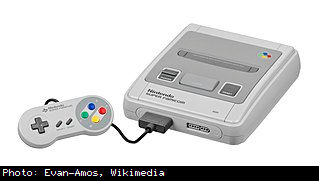
The shape of the console, in any market, was designed to discourage its use as a drink coaster, as people
had been doing with their NES consoles. Nintendo abandoned their front-loading NES design in
favour of more traditional top-loading for the Super NES. The rationale behind placing the cartridge
bus in the front of the machine had been to discourage Americans grouping the NES in with the
Atari 2600, Colecovision, and Intellivision game consoles following the Atari Shock of 1983.
Now that Nintendo was the dominant company in home gaming, they decided their earlier design
choices were no longer relevant (and it was turning out that the front-loading design was causing
damage to the cartridges), so they returned the cartridge bus to the top of the console.
CARTRIDGE ("GAME PAK")
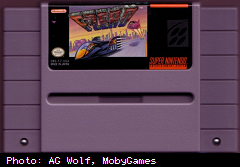
The shape of the cartridge was informed as much by practicality as aesthetics. Sega Genesis cart-
ridges were made of slick black plastic with rounded edges and wide labels, which was thought
to make it difficult to remove from the machine. Nintendo shrank the size of the label to
approximately a third the total surface area of the cartridge and made the casings out of a
textured plastic. As the cartridge sat so far down into the control deck, Nintendo added a mechanism
to the machine that would lock the cartridge into position when the power was on. This can be
seen in the long, popsicle-stick-shaped indentation in the cartridge casing shown in the photo.
The lock-in mechanism was removed from later models, and the cartridge moulds were changed.
The new shape was designed to allow compatibility with v.1.0 consoles but could not be clamped
in place.
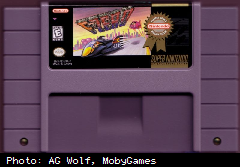
The new design expanded the popsicle-stick-shaped indentation into a rounded rectangle with
a wide indentation in the centre. This afforded space for v.1.0 consoles to extend their lock-in
mechanisms without actually restricting the cartridge's motion. The reason for this is likely that
people tended to pull the cartridge out of the bus without pressing the Eject button; provided
enough force, the user could damage the console, either from the sheer upward force on the
cartridge, which could damage the housing and the ejecting mechanism, or from the
"stuck plug" rocking motion the user would place upon the cartridge pins and the bus as they
attempt to free the cartridge, thinking it was simply stuck in the console. While v.1.1 consoles
retained the Ejecting mechanism, they omitted the lock-in portion, essentially allowing the
user to treat the Eject button as optional.
It is interesting to note that the lock-in mechanism remained on all models of SNS-001 and
SHVC-001 in Europe and Japan. However, the lock-in and cartridge ejection mechanisms
were totally removed from the system when it was redesigned in 1997, bringing it more
in line with the Nintendo 64.
1997 REDESIGN
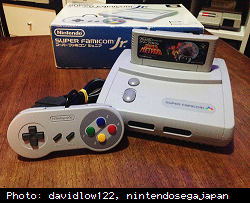
Near the end of the Super NES's lifespan, Nintendo of America redesigned the
system's casing and mainboard in order to offer players a budget alternative to the current-
generation consoles. The controller ports, cartridge bus, and output hookups all remained
the same shape, but the boxy SNS-001, as shown at the top of this page, ended production
and this sleeker, smaller model replaced it until the line's 1999 discontinuation. The new
design was created by NOA product designer, Lance Barr, who had designed the SNS-001,
as well as the NES-001 and -101. In order to keep costs down, the internal RF modulator,
stock support for RGB and S-Video hookups, and Satellaview expansion port were
removed, as was the cartridge ejection mechanism.
The same design with different colours and branding was released in Japan in 1998 as
"Super Famicom Jr." (pictured)
Despite characters from Super Mario RPG: Legend of the Seven Stars appearing on the
system's display box, that game was never packed in with the system. However,
several others were. By this time, the SNS-001 had stopped shipping with Super Mario World
packed in, and Nintendo were now selling it separately for $25.
GRAPHICS
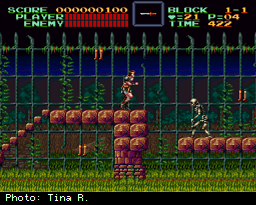
The Super NES's graphical capabilities were leaps and bounds ahead of the NES, and really,
most home computer systems available at the time. Out of a 15-bit colour palette, it could display
256 colours on the screen at a time. The system's launch titles made a full spectacle out of the
colour display abilities, as well as a technological marvel that heretofore had only been seen
on IBM PC...
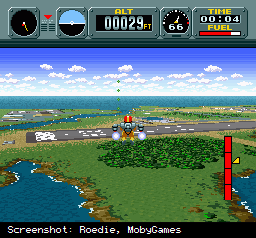
...3D graphics. Well, technically, what Nintendo termed "Mode 7" was not 3D. It works by
scaling, distorting, and rotating background images in such a way that it appears 3D.
Mode 7 is sometimes, erroneously, referred to as a "sprite scaler"; however, sprites cannot
be affected by it. Its use in Super Mario World, to expand and shrink certain bosses,
is the likely origin of the "sprite scaler" misnomer, as the boss characters are expressed
as sprites up until the point at which they must transform, where they become static
background images that are then acted upon in Mode 7.
Games that were released on both Sega Genesis and Super NES often used Mode 7 effects
to differentiate the ports from each other. For instance, the Bonus Stages in Aero the Acro-Bat
featured Aero jumping off a diving board into a small pool of water; on Genesis, this was a
simple extension of the regular gameplay, only with a steeper drop-off. On Super NES, this
was an overhead shot with a gradually increasing background in Mode 7, similar to Pilotwings.
SOUND
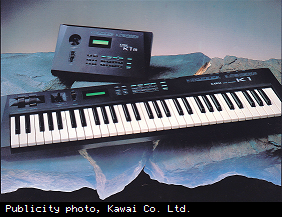
Unlike the original NES's four waveform banks and the Sega Genesis' wavetable synthesiser,
the Super NES used 8-bit PCM samples (digital recordings) to generate its musical scores.
Heretofore, PCM sampling was only done in small amounts, for sound effects or voiceover clips;
musical sampling was still very much in the realm of pro-audio production; such as the Roland
JV-1080, E-MU Emulator III, and Akai MPC-60. Big, expensive synth modules for big, expensive
studios. But, the Super NES managed to shrink it down to home size by making some concessions
in the audio quality department. The pro-audio equipment was capable of sampling in 12- and 24-bit
depth at a rate of 44.1 KHz. The Super NES could only handle 8-bit depth at 8 KHz. In order to
make the transition from wavetable to sample bank easier for developers who had been writing music
in assembly language since 1983, Nintendo included samples from a Kawai K1 (pictured) and E-MU Proteus/1
in the Super NES's software development kit.
While most developers never bothered to advance beyond these few primitives, some recorded their
own samples to use in their games. On a platform whose games tended to be largely forgettable, the
music was occasionally the sole deciding factor in a game's replay value. Jim Power: The Lost Dimension in 3D,
for example, is generally remembered as a fairly generic platformer with either an unfair or unchallenging
difficulty curve (depending on who you ask); however, Chris Huelsbeck's musical score for the game
often makes it onto lists of the platform's best music. On the opposite end of the spectrum, good games
with good music got launched into the stratosphere, and are continuously regarded as excellent games
into the 21st century. The best example of this in action is Rareware's Donkey Kong Country, with
music by David Wise, Eveline Fischer, and Robin Beanland. Initially, the developers believed the music
would be written by Koji Kondo, but Shigeru Miyamoto liked David's placeholder music so much, he
requested that Rare produce the entire score. Donkey Kong Country's sampling quality set the standard
for all future Super NES games.
COMPARISON TO THE SEGA GENESIS
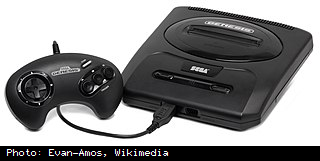
The Super NES's stiffest competition came from Sega. Known as the Mega Drive everywhere else in
the world, the Sega Genesis had similar capabilities in comparison to the Super NES, but as it had been
released first, it fell short in several key areas. The first being game control. The Genesis had only three
action buttons; an improvement over the 2-button control scheme of the Master System and NES,
but lagging behind the 4-button (+2 shoulder buttons) layout of the Super NES. This meant that the
Genesis version of games had to be developed first so as to not overtax the controller when it came to
character control, amongst other reasons.
Second was sound. The Genesis used a Yamaha YM2612 frequency-modulation synthesis chip with one
PCM channel to generate all of its music and sound effects. A descendant of the YM21280 used by
Yamaha's ubiquitous DX7 keyboard synthesiser, the mid-1980s sound it was capable of generating
fell far short of the Super NES's 8-channel PCM sample bank.
Third was colour. The Genesis used a palette of 512 colours and could display 61 of them simultaneously.
The Super NES's colour table had 15-bit depth (32,768 colours), of which 255 could display per scanline. Games
developed for Super NES first had to occasionally have their colours scaled back in order to display
on a Genesis screen. Games developed for Genesis first could look flat with severe banding on shadow
gradients.
However, with all this talk of how primitive the Genesis was in relation to the Super NES, the Genesis
was superior to the Super NES in a few places.
The Genesis controller had greater affordance for players with large hands. Where the Super NES
controller's 4 face buttons were arranged in a way that the player needs to move their right thumb up
and down, the Genesis' face buttons (at least on the 3-button variant) were arranged in a line and
players could press each button by simply rocking their thumb back and forth. Moreover, diagonal
directions on the D-pad were easier to hit, as the Genesis' D-pad was a raised area on a flat
domed surface. Players could hit diagonals by simply moving their left thumb onto the flat area,
while the Super NES's D-pad had no such ability. The player's thumb had to be large enough to
press two directons on the pad at the same time.
Also, the Genesis' controller connected to the console with a standard DE-9 connector, allowing
users with the necessary skill to repair their own controllers or even build new ones.
The Genesis' control deck had no Eject button, with Sega's expectiation being that people were more
apt to manually pull the cartridge out of the machine than press a button to operate an ejection
mechanism. Indeed, the Super NES's Eject button was a key point of failure that was prone to
breakage more readily than any other part of the console. Moreover, the Genesis had no lock-in
mechanism. As discussed above, that feature of the Super NES was removed in later hardware revisions,
due to players damaging their systems.
~~~~~~~~~~~~~~~~~~~~~~~~~~~~~~~~~~~~~~~~~~~~~~~~~~~~~~~~~~~~~~~~~~~~~~~~~~~~~~~~~~~~
Copyright © 2003-2022 Tina Rosenthal. The code is pretty basic, but it's mine. Don't get any ideas, now!